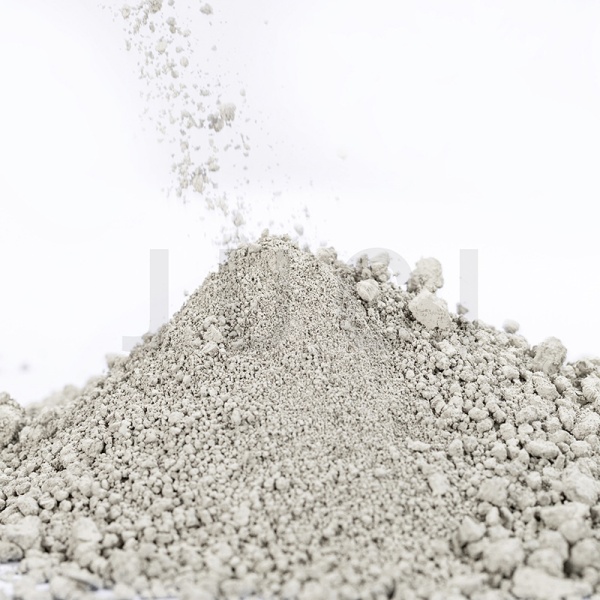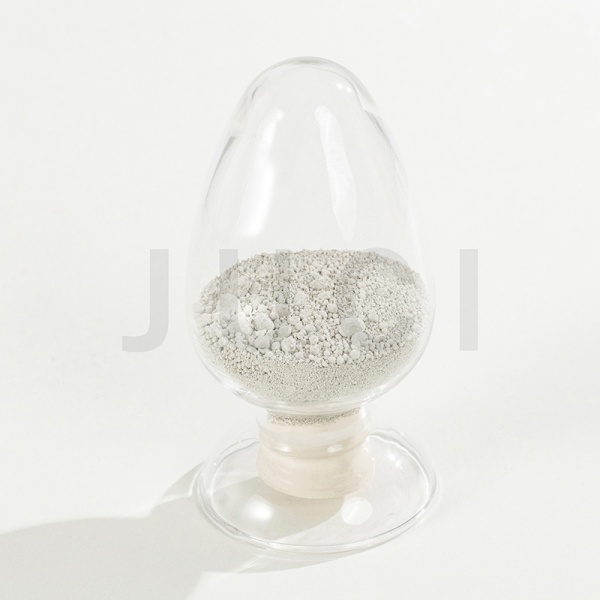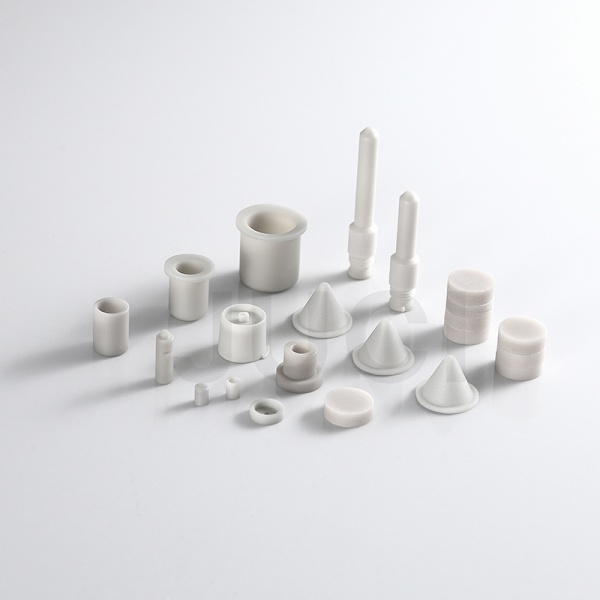



AlNセラミックスは、優れた絶縁性、高い熱伝導性、優れた高温耐性、耐腐食性、そしてシリコンと同等の熱膨張係数を示すため、次世代の大規模集積回路、半導体モジュール回路、高出力デバイスに最適な放熱・パッケージング材料です。しかしながら、 AlN粉末—生産のための原材料 高温AlNセラミックス—は加水分解に対して非常に敏感です。これは輸送と保管を複雑にするだけでなく、より重大なことに、加水分解後に窒素含有量が減少し、最終的なAlNセラミックスの性能を著しく低下させます。さらに、AlN粉末の加水分解不安定性は、水系成形プロセスの開発を妨げています。 工業用AlNセラミック製品.

このように、AlN粉末の加水分解感受性は、その広範な応用における最大の障害となっています。この問題を克服し、粉末の耐加水分解性を向上させて水系湿式成形に適したものにすることが、近年のAlNセラミックス分野における重要な研究課題となっています。
加水分解メカニズム
AlN粉末の加水分解条件と生成物は、研究によって若干異なります。一部の研究者は、粉末がまず水と反応して非晶質AlOOHとアンモニアガスを生成すると示唆しています。その後、アンモニアが水と反応してOH⁻を生成し、溶液のpHを上昇させます。特定の温度と酸性条件下では、AlOOHはさらに水と反応してAl(OH)₃を生成します。

AlN が加水分解したかどうかを判断するにはどうすればよいでしょうか?
加水分解によりアンモニアガスが発生し、これが水中で NH₄⁺ と OH⁻ にイオン化するため、溶液の pH が変化するため、pH は加水分解の程度の重要な指標となります。
さらに、XRDは加水分解前後の相分析に用いることができ、新たな相を定性的に同定し、加水分解生成物/度合いを評価することができます。SEMはAlN粒子の形態変化を明らかにし、加水分解の進行に関する定性的な知見を提供します。TEMは形態分析に加え、加水分解生成物の結晶構造を解析することができます。加水分解はAlN粉末を消費するため(アンモニア放出による)、加水分解前後の粉末の質量減少を測定することは、もう一つの重要な指標となります。
AlN 加水分解を軽減するには?
加水分解の抑制には通常、AlN 粒子を化学結合または物理吸着によって保護層でコーティングし、水から隔離します。
主な方法は次のとおりです。
1. AlN表面改質——表面化学改質
このアプローチは化学的に反応し AlN粒子 改質剤を配合して不動態化層を形成し、表面特性を向上させます。
次のようなテクニックがあります:
①カップリング剤改質
②グラフト共重合改質
③表面酸化改質
④界面活性剤の改質

2. AlN表面処理——表面物理コーティング処理
(1)液相コーティング
AlN粉末懸濁液に改質剤を添加し、機械的な撹拌によってコーティングを形成します。コーティングは化学反応を伴わず、吸着またはファンデルワールス力によって付着します。
(2)蒸着コーティング
昇華反応を利用した材料(SiOなど)を加熱することでAlN粒子上に堆積させ、耐加水分解性を向上させます。例えば、SiO粉末をAlN粉末、カーボンフェルト、グラファイト板を入れたAl₂O₃るつぼ内で昇華させ、保護層を形成します。
あるいは、強酸改質剤をAlN粉末に機械的ボールミルで混合することも可能です。この方法は高温を回避でき、再現性も良好で、耐加水分解性を大幅に向上させると同時に、水中での分散性と安定性も向上させるため、高固形分AlNセラミックスラリーの調製に有効です。

まとめ
すべての方法で AlN 粉末の耐加水分解性が向上しますが、それぞれに限界があります。
例えば:
セラミックグレードのAlN粉末には高い純度が求められます。シリコンベースのコーティング(例えばシラン)は焼結中に不純物を導入し、熱伝導率を低下させる可能性があります。この場合、有機酸または熱酸化が推奨されます。
熱伝導性材料(TIM)は、高い充填量と均一性を実現するためにシリコーンオイル/ゲルとの適合性を必要とします。シランベースの処理がより適しています。
複数の変更方法を組み合わせると、より優れた結果が得られる可能性があります。

厦門Juciテクノロジー株式会社について
厦門ジュチテクノロジー株式会社は、研究、開発、生産、販売を専門とするハイテク企業です。 高性能AlN材料. 有力者として AlN粉末 サプライヤー当社は、エレクトロニクス、半導体、航空宇宙などの業界向けに、高品質の窒化アルミニウムシリーズ製品とソリューションを提供することに尽力しています。厦門聚紫科技有限公司は、AlNの加水分解問題を効果的に解決します。卓越した品質とサービスにより、厦門聚紫は世界中のお客様から幅広い信頼を得ています。
メディア連絡先:
厦門 ジューシテクノロジー 株式会社
電話番号: +86 592 7080230
メールアドレス: miki_huang@chinajuci.com
Webサイト: www.jucialnglobal.com